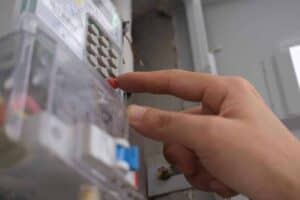Ramokgopa's briefing on load shedding highlights government buildings' energy misuse and the future of Tutuka power station.

On Sunday, Minister of Electricity Kgosientsho Ramokgopa updated the public on the implementation of the Energy Action Plan (EAP).
The EAP was introduced by President Cyril Ramaphosa in July 2022, highlighting the work that must be done by both Eskom and government to ensure load shedding is reduced.
Energy Action Plan briefing
Ramokgopa said government is taking action to address the immediate crisis as well as finding long-term solutions to eliminate load shedding altogether.
However, Ramokgopa also said excessive energy consumption by government buildings at night has been identified as a contributing factor.
Certain government facilities were found to be consuming energy unnecessarily during the night when offices are vacant.
Government to blame
Ramokgopa said it’s vital for the state to lead by example when it comes to energy conservation. He said Minister of Public Works Sihle Zikalala is taking action to rectify this situation.
“Through simple action, we can reduce load shedding while saving on energy bills,” he said.
“It’s important that we bring this to the attention of South Africans to say that we are sometimes on stage 1 when we should be having no load shedding, but we keep drawing from the grid even in instances when we don’t have to.”
“We are mobilising all the resources at our disposal and will do whatever it takes to achieve energy security”.
Government
Still, the electricity minister said although this contributes greatly, South Africans must also contribute by taking action to reduce demand on the grid.
Reducing consumption
While our non-essential appliances cannot hold a candle (pun intended) to the consumption by large government facilities, Ramokgopa still wants you to watch your behaviour.
He said managing the demand is the “fastest and most efficient way to reduce demand”. (Faster than switching off government facilities?)
“It’s quicker because we don’t have to spend money, we don’t have to have new generation capacity [and] we don’t have to improve the energy availability factor.
“It has to do with our own behaviours and how we treat consumption in our own homes. It does not mean we need to deteriorate our quality of life. We can achieve both. Just by switching off lights, you are switching on the South African economy.
READ: Eskom outlines new load shedding schedule [6 August]
Tutuka update
Ramokgopa also provided an update on Tutuka, South Africa’s worst-performing power station.
Even though output is just 11% of the expected 560 MW, the power station will not be closed down.
Instead, Ramokgopa said, regular inspections will be carried out at Tutuka with plans to return some units to service by late August or early September.
He said everything possible is being done to restore those units.
Provinces with sufficient grid capacity
Gauteng and Mpumalanga were identified as the only two provinces in the country with adequate grid capacity.
Ramokgopa said Eskom deliberately directed the market to areas with sufficient grid capacity to ensure a balance between capacity and opportunity.
READ: ‘Load shedding an unwelcome occurrence, all of us suffering’ – Ramokgopa






